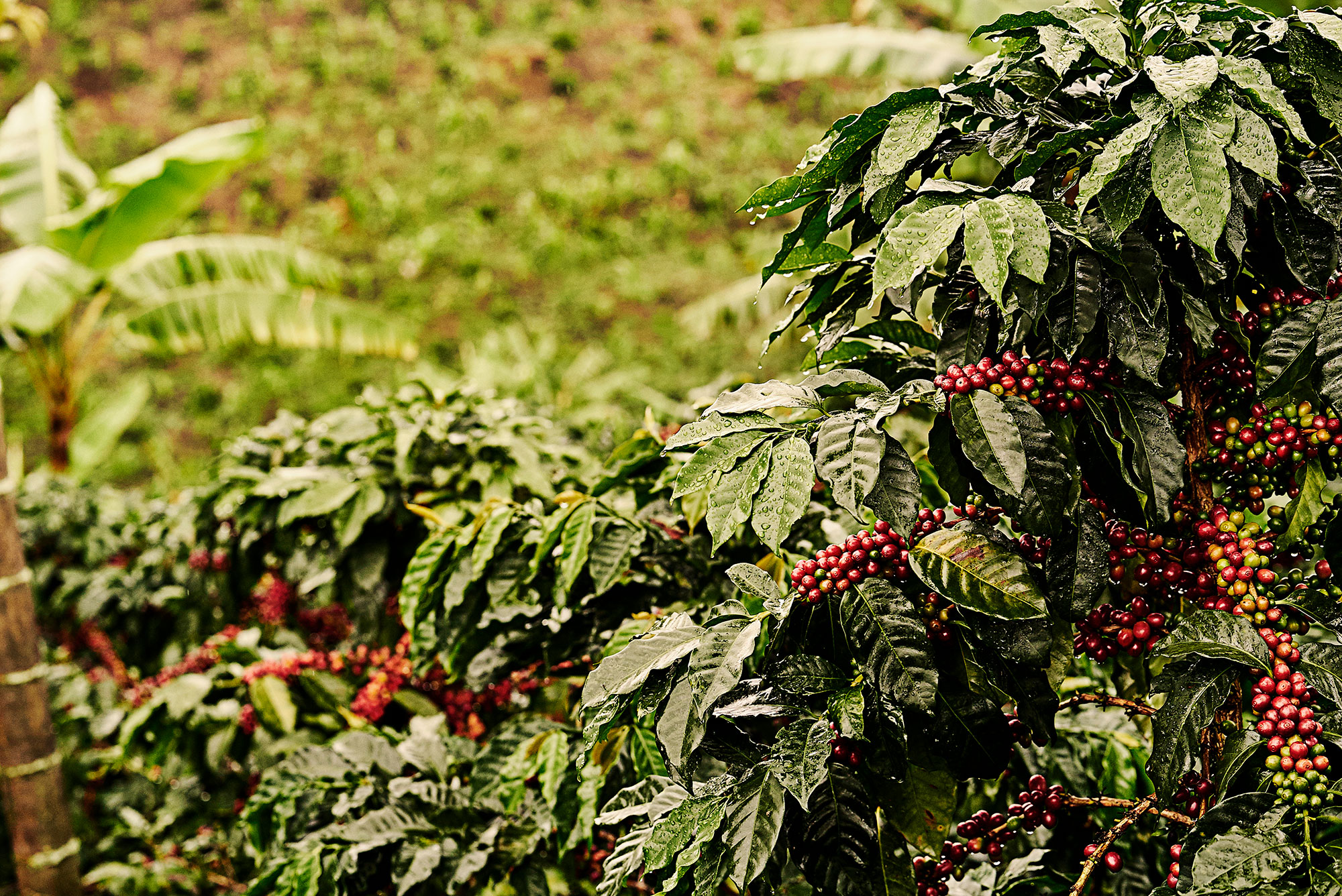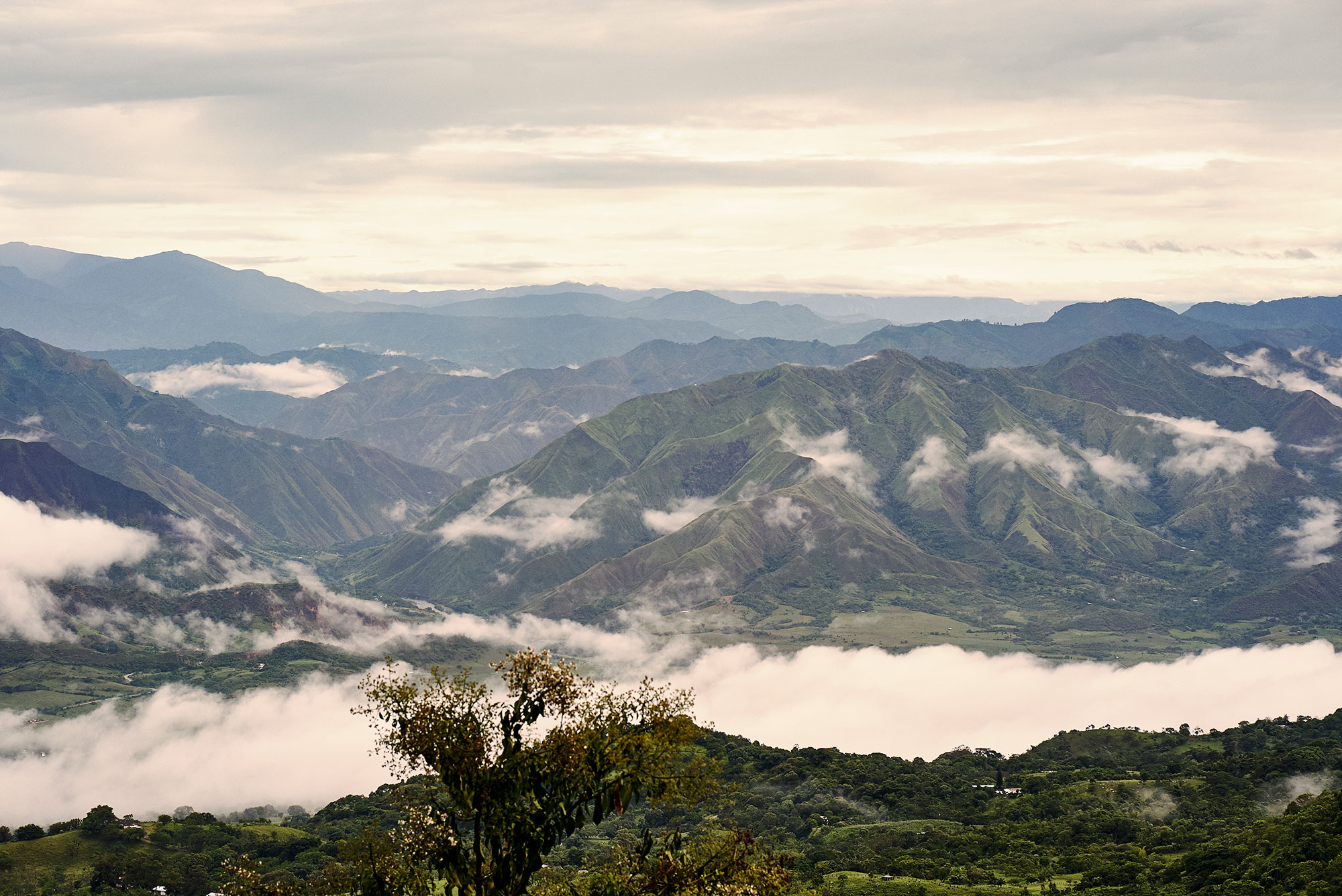CULTIVATION ON THE PLANTATION
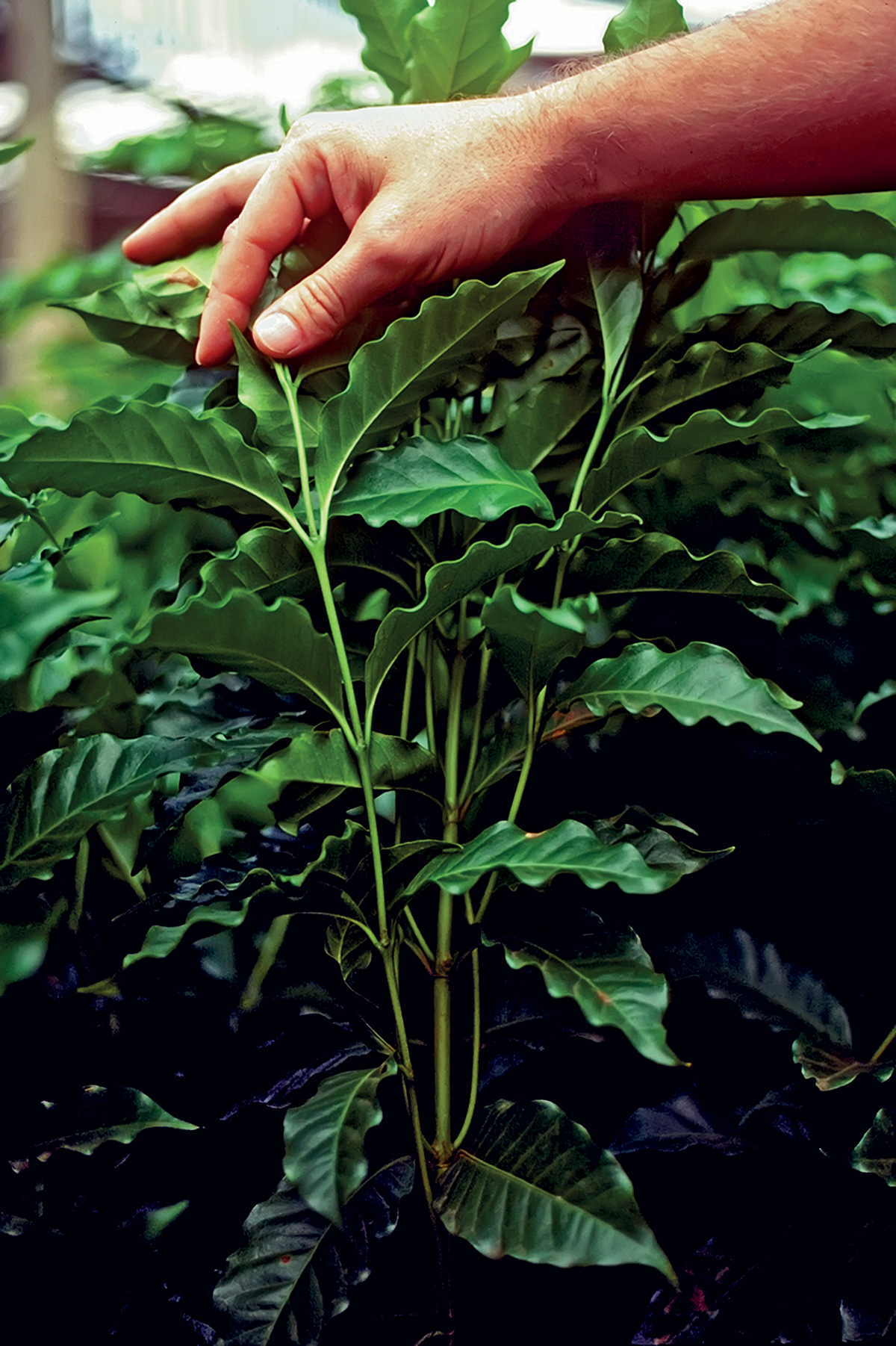
Coffee is cultivated in plantations in over 75 countries around the world. An enormous amount of effort goes into cultivating and harvesting the crop before it reaches the commercial coffee roaster. The entire process lasts a year and includes painstaking processes such as harvesting the ripe fruit and separating the beans from their shells – all of which have an impact on the ultimate quality of the coffee.
Harvesting
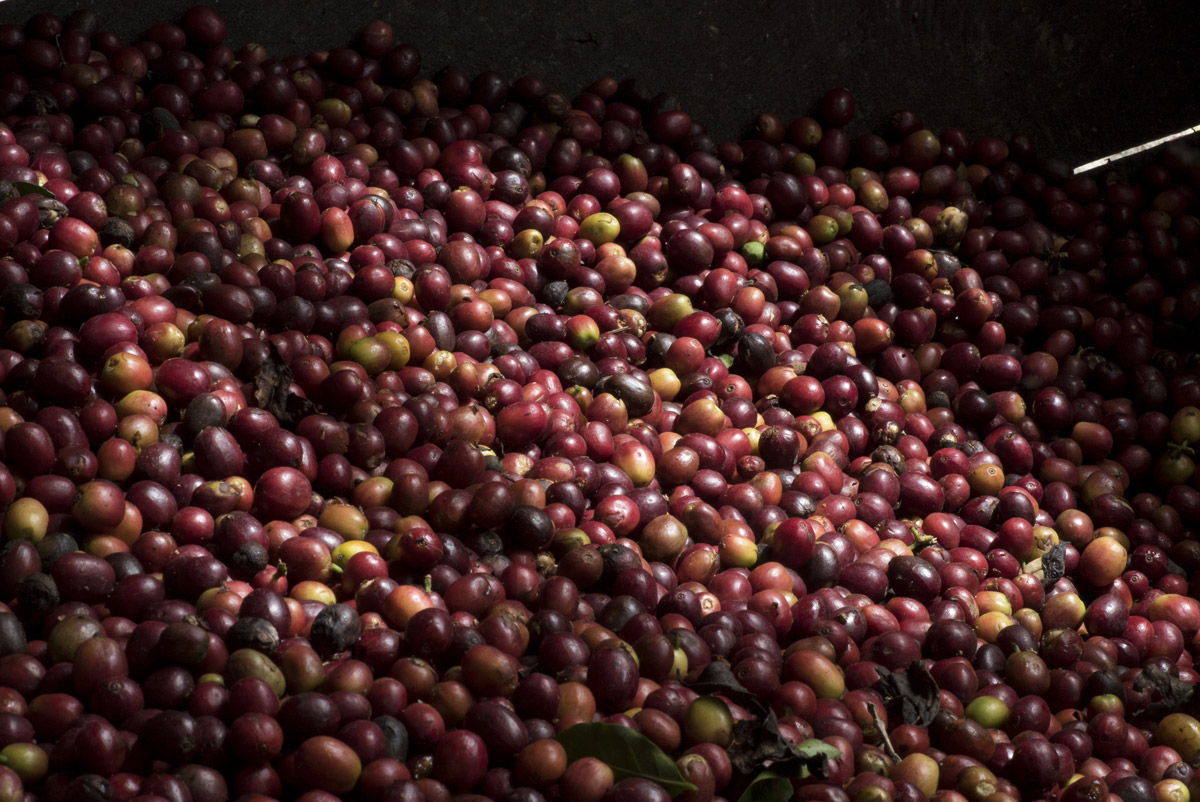
Coffee is cultivated in plantations in over 75 countries around the world. An enormous amount of effort goes into cultivating and harvesting the crop before it reaches the commercial coffee roaster. The entire process lasts a year and includes painstaking processes such as harvesting the ripe fruit and separating the beans from their shells – all of which have an impact on the ultimate quality of the coffee.
Handpicking

In most arabica-growing areas the ripe cherries will be carefully handpicked and dropped into the picker’s basket, the weight of which determines the picker’s pay and can be as heavy as 100 kg.
A tree will be revisited many times until every cherry on it has ripened. The quality of the crop is improved by only harvesting the ripe cherries. However, handpicking is a rather expensive method as it is a slow and labour intensive process. As a result, this method is only used to harvest the finest varieties of coffee.
Strip-picking
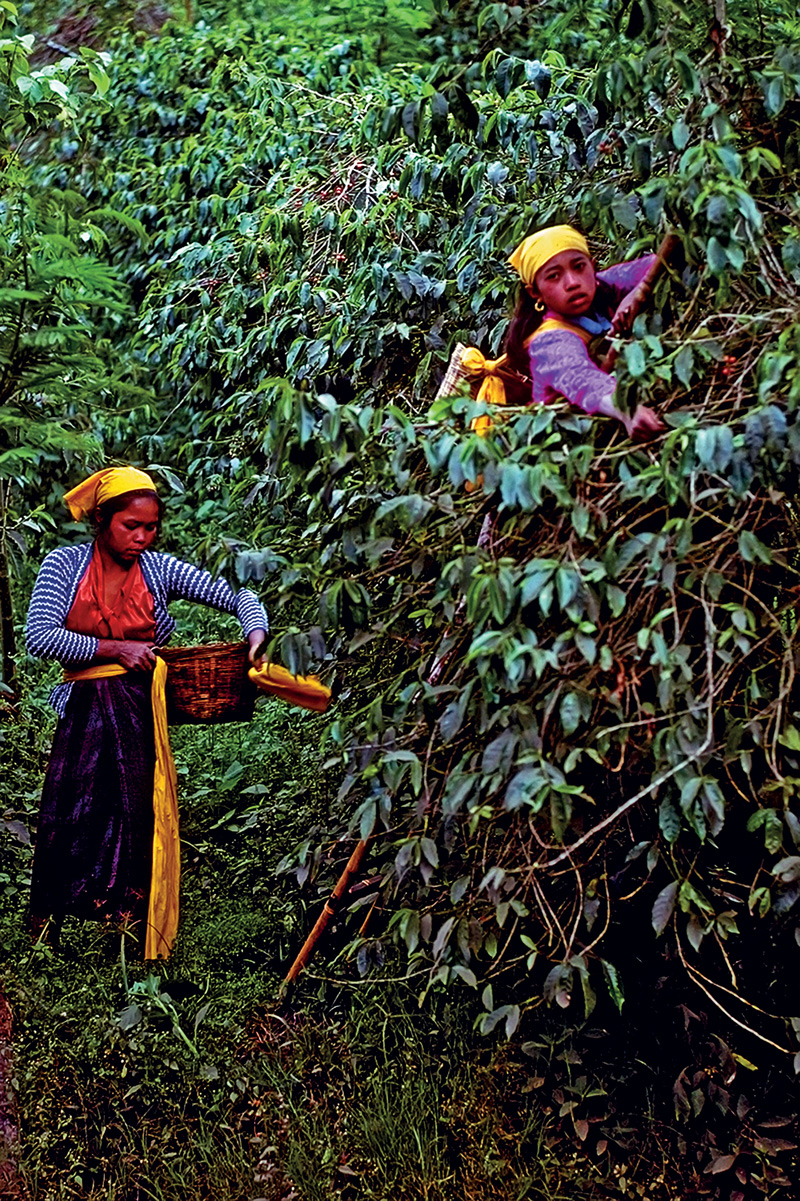
This method is most often employed in Brazil, where the flat terrain of the estates allows the trees to be planted in even rows.
A harvester will strip-pick the entire tree when the majority of its cherries are ripe by sliding his or her fingers down the branches, causing all the cherries, ripe or not, to fall to the ground.
On some large plantations, a large vehicle will be driven slowly down the row of coffee trees, and its revolving arms will knock the looser, and hopefully riper, fruit to the ground.
Workers then gather the scattered fruit, winnowing it with large meshed hoops, which they use to throw the cherries up in the air to separate them from the twigs, leaves and dust.
No matter how much care is taken in strip-picking, under or over ripe fruit invariably gets in with the ripe cherries. As a result, the fruit must later be processed by a sorting machine.
Separating the Beans from the Fruit Pulp

After the cherries have been harvested, the beans must be removed from the fruit pulp. It is very important that the bean is removed from its outer casing and the fruit without being damaged. Two methods are used to accomplish this:
– Wet Processing
– Dry Processing
Wet Processing

Wet processing is usually employed with high quality coffees. Before any fermentation sets in, the freshly picked cherries are immediately washed in large tanks from which the water carries them into a system of channels. Staying in contact with the fresh-flowing water helps to loosen the outer skin while the cherries are carried towards a de-pulping machine. As they continue on their journey along the channels, the cherries are sifted. After the beans have been sorted by size and weight, they are sent to fermentation tanks where any remaining mucilage is broken down by natural enzymes during a 36-hour soak. During this stage known as the fermentation period, the beans are carefully monitored to ensure that their aroma is not adversely affected.
After the fermentation process is complete, the beans are rinsed and spread out on patios or wire-mesh platforms to dry in the sun. As is also the case in the dry method, the beans are dried in the sun for a couple of weeks or placed in low-temperature drying machines until their moisture content is reduced to 11–12%. The drying process must be performed correctly in order to preserve the quality of the coffee. Still in their parchment jackets, the beans are stored in special warehouses until transportation. Just before they are sent to the roasters, the beans go through one final process where a machine removes the parchment jacket. The wet method is more expensive than the dry method as it uses much more equipment and is much more labour intensive.
Dry Processing
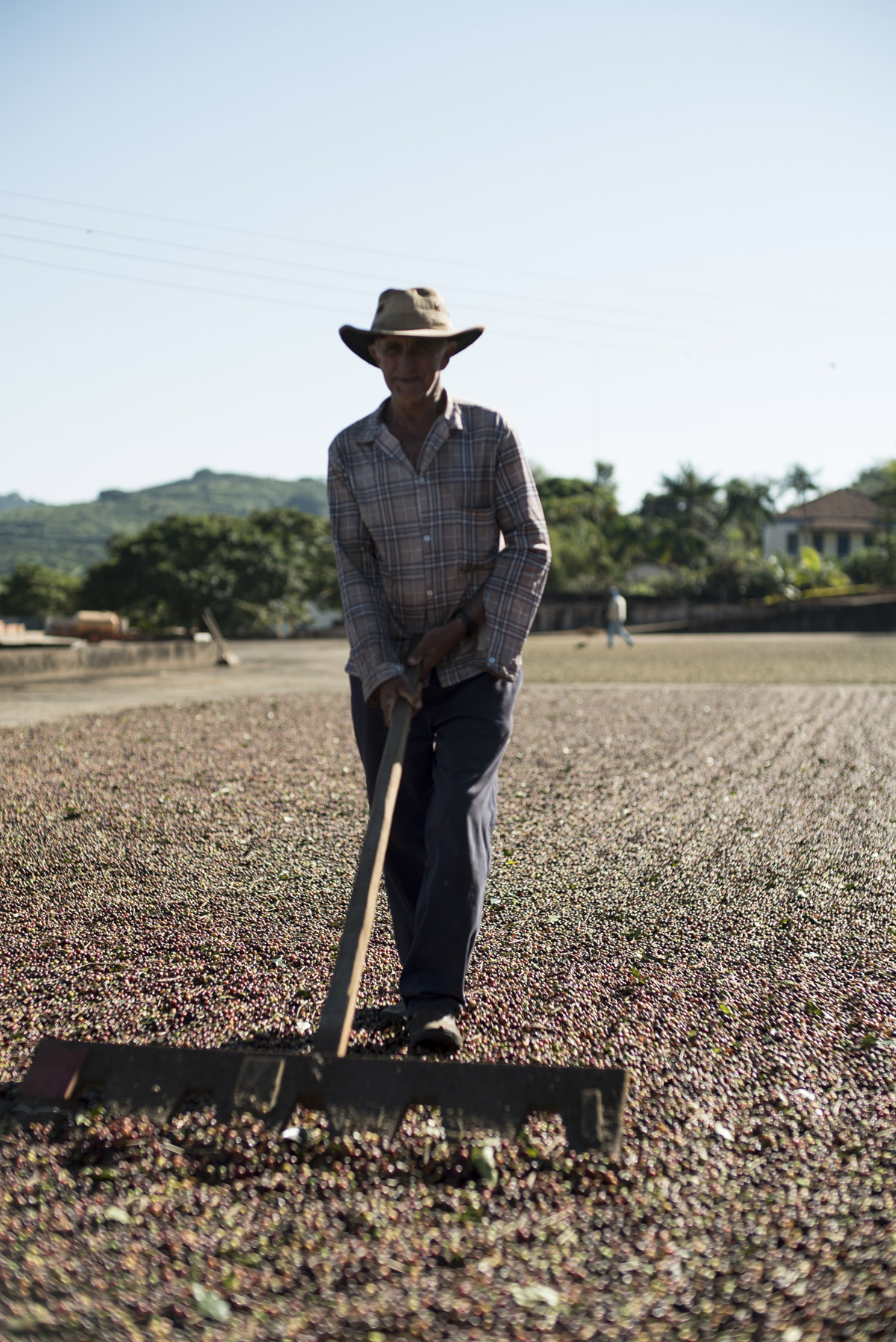
Dry processing also begins with cleaning the newly picked cherries with pressurized air, sieves or water to remove any foreign materials such as leaves. In addition, unripe and/or defective cherries float to the surface and can be easily removed. The cherries are then spread out in the open air to dry in the sun for 2-3 weeks. The beans are turned over and raked frequently to ensure that they dry completely. At night and during rainy weather, they are covered to protect them from harm. In arid lands, the beans are sometimes laid out to dry in the sun without being washed first.
After being dried in the sun, the beans are placed in hot air machines to reduce their moisture content to 11–12%. Next, they are stored in silos or may be sent to a special facility for final hulling where the shells and outer layers are removed by a special machine. As a final step, the beans are sorted according to size and weight. The beans are then put in 60 kg bags to be stored in warehouses or are immediately loaded onto ships for export.
The Main Coffee-Producing Countries
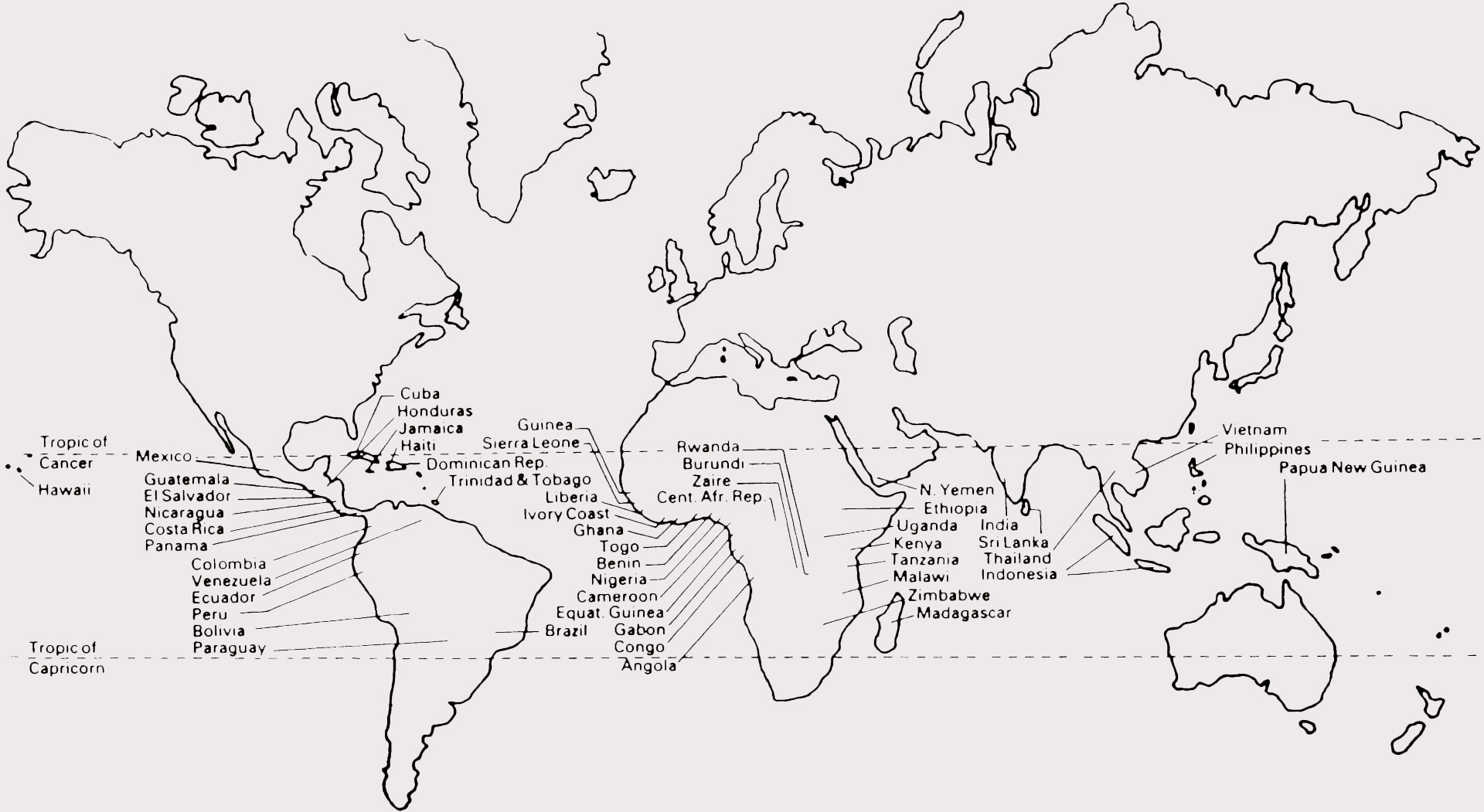
In the 17-18th centuries, Western powers began to cultivate coffee in their colonies in Africa, South America and Asia. After independence, these former colonies continued to produce coffee and today export green coffee beans all over the world.
Ethiopia (Africa)
The birthplace of coffee, Ethiopia is one of the world’s most important producers in terms of both quality and quantity. Ethiopian coffee possesses both a wonderful aroma and low caffeine. Some of the regions that produce the highest quality coffee are “Sidamo”, “Kaffa”, “Harrar” and “Wellega”. Ethiopian coffee is described as lemony, light, winey and floral.
Kenya (Africa)
Kenyan wet-processed arabica coffee is grown at high altitudes and is one of the best in the world. Kenyan coffee is of consistent high quality as it is strictly regulated by the nation’s coffee board. Superior quality “AA” Kenyan coffee is much sought after by gourmets and certain special manufacturers. Due to its high acidity levels, Kenyan coffee is described as sharp, fruity and sometimes lemony/citrus.
Costa Rica (Central America)
Costa Rica is one of the best places in the world to grow coffee thanks to its geography and climate. Wet-processed Arabica is cultivated in plantations in the countryside surrounding the capital, San Jose. The best known varieties are “Tres Rios”, “Tarrazu”, “Dota” and “San Marcos”. Costa Rica coffee is a favourite with coffee lovers thanks to its strong and lovely fragrance and high acidity levels.
Guatemala (Central America)
This country also produces one of the best coffees in the world. The country’s premium crop is named after Guatemala Antigua, an ancient city destroyed by earthquake in 1773 located near today’s capital city, Guatemala. However, as coffee is cultivated over a wide-ranging area, there are regional variations in flavour. Its general taste profile can be described as mid to full bodied, floral, acidic, and a blend of smoky, spicy and chocolaty flavours that create a wonderful balance.
Jamaica (Caribbean)
With its matchless flavour, Jamaican “Blue Mountain” coffee is an important source of income for Jamaica and grows in a small region in the east of the island. Other countries may try to cultivate this famous and rare coffee and market it as “Blue Mountain”, but the genuine article only grows in Jamaica. With its distinctive taste, “Blue Mountain” stands out from all the other coffees grown in the Caribbean. Thanks to its high quality, limited supply and rarity, “Blue Mountain” coffee is quite expensive. Unlike other varieties of coffee, real “Blue Mountain” coffee is stored and exported in barrels rather than sacks. Not overly acidic, it has a very light, nutty, semi sweet and smooth flavour, making it the world’s most famous, most expensive, and most talked-about variety of coffee.
Brazil (South America)
Supplying one third of the world’s coffee, Brazil’s coffee huge plantations are comprised of millions of trees that cover the peaks of the country’s central and southern regions. In addition to being an important player in the commercial coffee industry, Brazil is the largest consumer of coffee in the world, with an annual consumption of 720 million kg. Indeed, the Brazilians call breakfast “café da manhã”, or morning coffee. Brazil mainly grows arabica plus a small quantity of robusta, and the crop is generally dry processed. Each of Brazil’s states produces different varieties of coffee. However, the “Bourbon Santos” variety is the preferred favourite of coffee experts. Gourmets describe Brazilian coffee as easy to drink without too much acidity.
Colombia (South America)
Representing 12% of the world’s coffee supply, Colombian coffee owes its reputation and the rich soil on which it grows to the country’s geography of active volcanos. Mountain ranges separate central Colombia into three regions, called cordilleras, that run from north to south. The best coffee comes from the central and eastern cordilleras. The best coffee varieties grown in the central cordillera are “Medellin”, “Armenia” and “Manizales”. With its full body, rich flavour and refined, medium acidity, “Medellin” is the best-known variety. “Manizales” and “Armenia” generally have a lighter body and lower acidity. The eastern cordillera’s best-known two coffees are “Bucaramanga” and “Bogota”. “Bogota” is grown in the area around the nation’s capital. It is considered one of Colombia’s most refined coffees and is less acidic than the “Medellin” variety. “Bucaramanga” coffee has a lighter, refined flavour; like “Sumatra” coffee, it is full-bodied, low in acidity and has a rich flavour.
Hawaii (South Pacific)
Hawaii has been growing coffee since 1818. The only coffee grown in United States territory, Hawaiian coffee is known as “Kona” coffee. Expert opinion on “Kona” varies, but it is often compared to Jamaican Blue Mountain coffee. Both coffees are mildly acidic, of medium body, and with a pleasant, nutty aroma. Some coffee experts also characterise it as having a spicy flavour with a hint of cinnamon. As is it is only grown in a small region, Kona is also an expensive coffee.
Sumatra-Indonesia (Southeast Asia)
Almost all Indonesian coffee is grown on three islands: Sumatra, Java and Sulawesi. Sumatra supplies 68% of the country’s total production. The island’s arabica varieties are marketed under the “Sumatran” and “Blue Sumatran” names. With its rich aroma and low acidity, “Mandheling” is known as “the world’s heaviest coffee”. “Gayo Mountain” is described as sweet, spicy, exotic and herbal, while some experts believe that “Ankola” is the world’s best unwashed arabica.
Java-Indonesia (Southeast Asia)
The island of Java accounts for 12% of Indonesia’s coffee production. A plague of leaf rust (hemileia vastatrix) in the 19th century left only the arabica stands at higher elevations unscathed. Known as “Old Java”, this arabica variety is described as smooth, rich, with an aromatic, smoky character. The coffee trees lost to the blight were replaced with “Estate Java”, which is more acidic and lighter-bodied than the “Old Java”.
Coffee’s Contribution to the Ecosystem
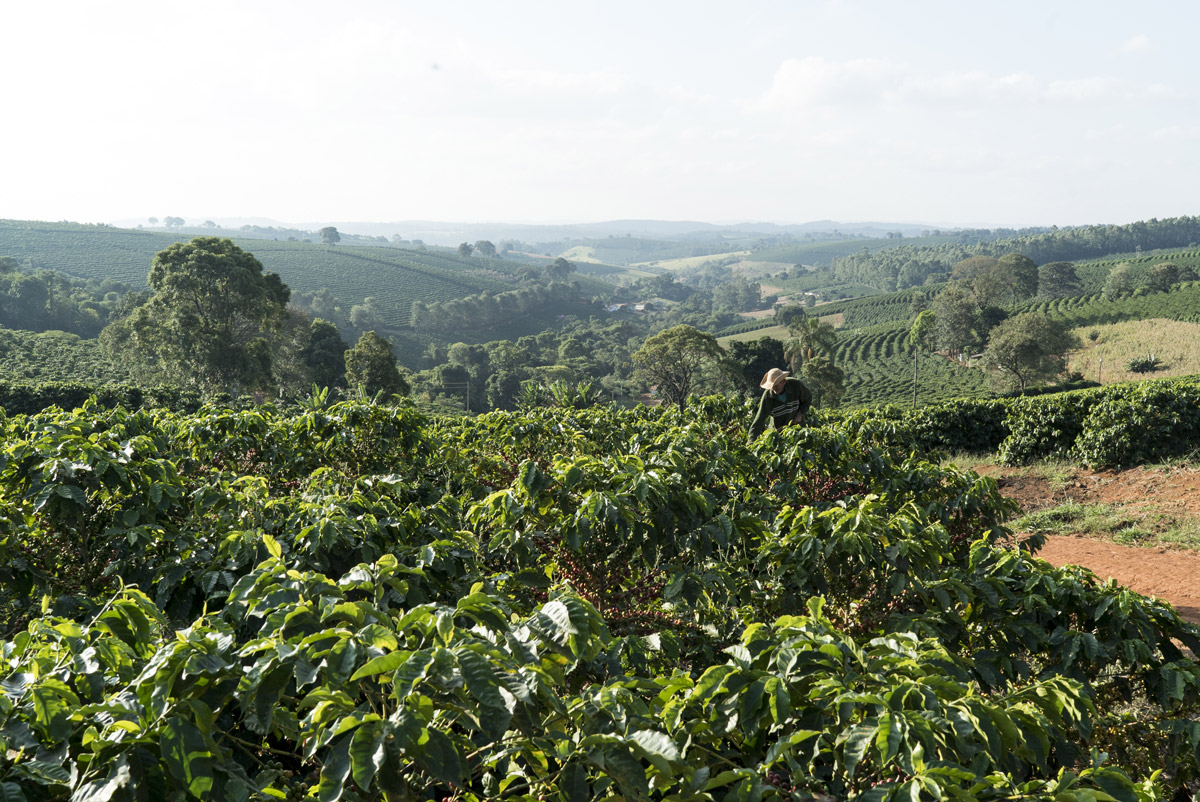
Deforestation and erosion are two of the greatest environmental problems facing the tropics. To prevent these from happening, priority should be given to planting fast-growing trees such as the coffee, lemon and orange trees.
The coffee tree blossoms immediately after the dry season, and then drops its leaves – leaves that are particularly rich in nutrients and minerals that enrich the soil. This natural fertilizer improves the fertility of the soil. Coffee trees and other trees planted beside them serve as natural windbreaks and provide shade. These trees drop more leaves than all other tropical plants, and are more quickly absorbed – first by the soil as fertiliser and then by the trees.
The cypress and pine trees planted around coffee plantations to provide shade also provide nesting for many varieties of birds whose habitats have been destroyed by indiscriminate clear cutting.
The leaves that fall off the coffee trees during heavy tropical rains during the rainy season create a protective layer over the soil that helps prevent erosion. In the dry season, this layer of coffee leaves keeps the soil moist and provides the ideal conditions for all tree growth.
Furthermore, coffee cultivation provides employment to millions of people every year. The sustenance needs of some 20 million families in coffee producing nations are met by working on coffee plantations.

